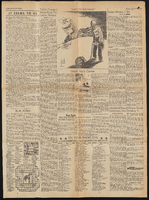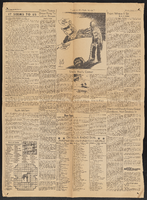Search the Special Collections and Archives Portal
Search Results
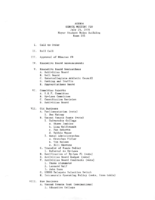
Meeting minutes for Consolidated Student Senate, University of Nevada, Las Vegas, July 25, 1978
Date
1978-07-25
Archival Collection
Description
Agenda and meeting minutes for the University of Nevada, Las Vegas Student Senate. CSUN Session 7 Meeting Minutes and Agendas.
Text
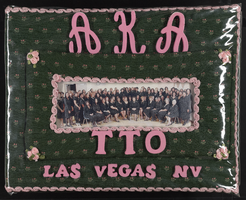
Alpha Kappa Alpha Sorority, Theta Theta Omega Chapter scrapbook
Date
2008 to 2009
Archival Collection
Description
From the Alpha Kappa Alpha Sorority, Incorporated, Theta Theta Omega Chapter Records (MS-01014).
Mixed Content

Transcript of interview with Sharon Gutzman by Lisa Mades, March 13, 1981
Date
1981-03-13
Archival Collection
Description
On March 13, 1981, Lisa Mades interviewed Sharon Gutzman (born in Winnipeg, Canada in 1935). Gutzman talks much about early Las Vegas, Nevada, including early businesses, the first casinos, and the first airport. She also discusses educations, shopping, recreation, entertainment, and gambling.
Text
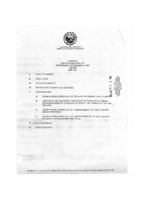
Meeting minutes for Consolidated Student Senate University of Nevada, Las Vegas, November 9, 1989
Date
1989-11-09
Archival Collection
Description
Includes meeting agenda and minutes. CSUN Session 20 Meeting Minutes and Agendas.
Text
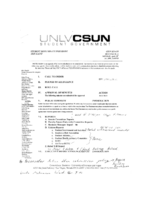
Meeting minutes for Consolidated Student Senate, University of Nevada, Las Vegas, April 28, 2008
Date
2008-04-28
Archival Collection
Description
Includes meeting agenda, with additional information about bylaws.
Text
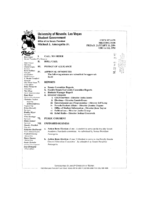
Meeting minutes for Consolidated Student Senate, University of Nevada, Las Vegas, January 16, 2004
Date
2004-01-16
Archival Collection
Description
Includes meeting minutes and agenda, along with additional information about CSUN Executive Board Elections packet.
Text
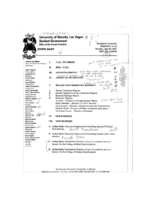
Meeting minutes for Consolidated Student Senate, University of Nevada, Las Vegas, July 09, 2001
Date
2001-07-09
Archival Collection
Description
Includes meeting minutes and agenda, along with additional information about evaluations regarding the Stree-Free Zone, entertainment and programming of Fall events, letters, CSUN services opperating policy, bylaws, and performance agreements.
Text
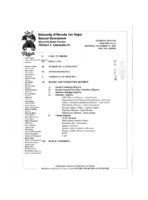
Meeting minutes for Consolidated Student Senate, University of Nevada, Las Vegas, October 27, 2003
Date
2003-10-27
Archival Collection
Description
Includes meeting agenda, along with additional information about proposals and bylaws.
Text
Pagination
Refine my results
Content Type
Creator or Contributor
Subject
Archival Collection
Digital Project
Resource Type
Year
Material Type
Place
Language
Records Classification

